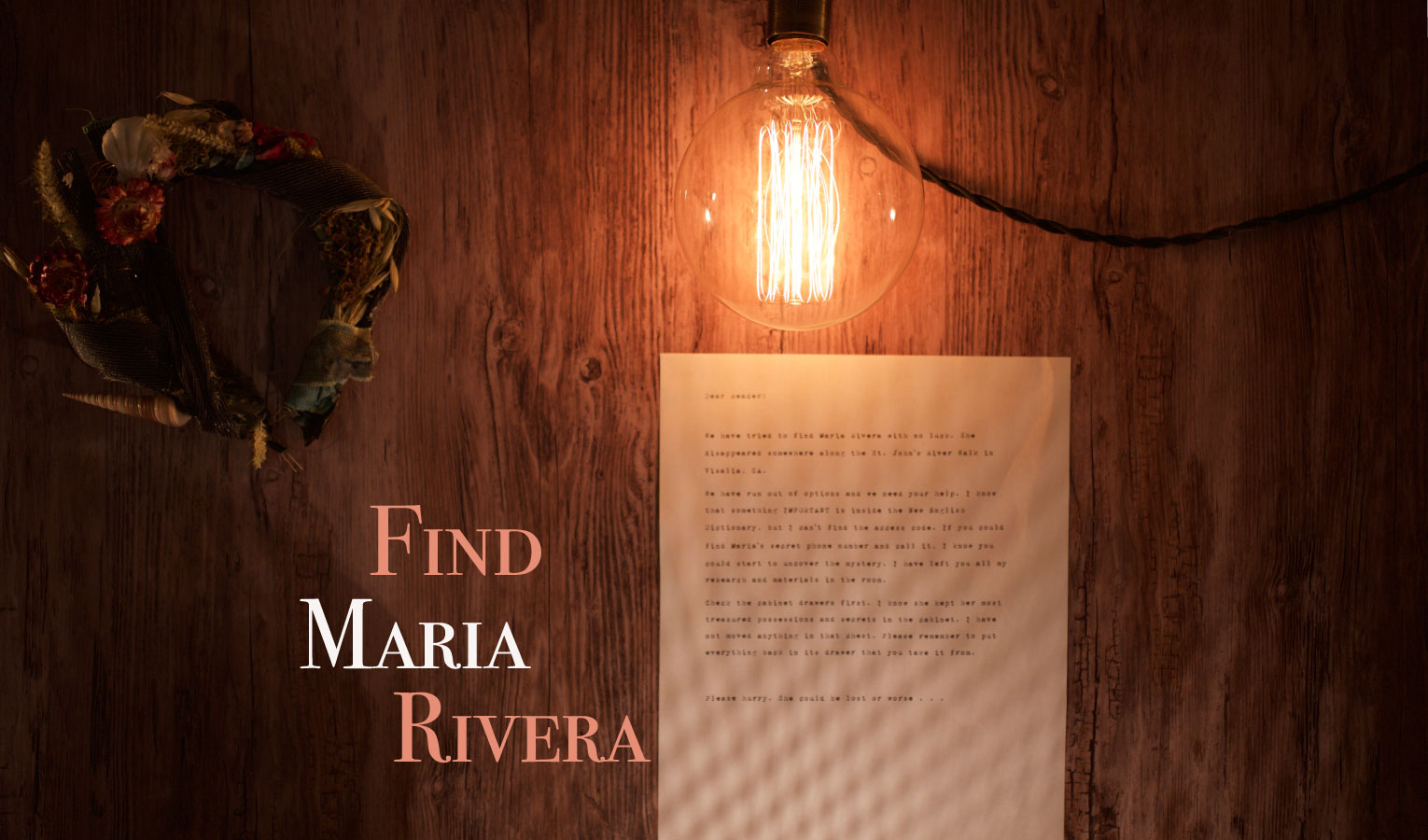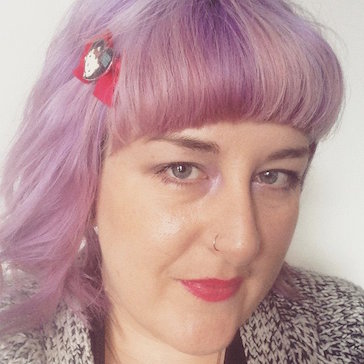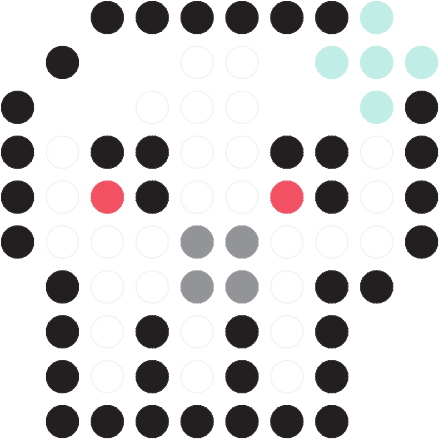Find Maria Rivera
a narrative, puzzle-based installation which follows the story of the disappearance of a water witch from Visalia, CA.

Melanie Crean
John Sharp
Writing and ResearchEthan D Silverman
Barbara B. Morris
Find Maria Rivera is a narrative, puzzle-based installation which follows the story of the disappearance of a water witch from Visalia, CA. Situated between Escape The Room games and Participatory Theater, like Punch Drunk’s Sleep No More, Find Maria Rivera explores themes of environmentalism, mythology, and CSI. The piece leverages responsive objects, web experiences and audio to draw in the participant in a mysterious and emerging story experience. The story takes place in the central valley of California with the backdrop of the looming drought and water crisis. As the user enters the installation they will be presented with a series of clues and puzzles in a CSI investigation room. The participant will explore the physical objects, text, mobile websites, and audio to unravel the mystery.
I am adapting the Rusalka myth of a fallen water bearer to be set in the current day Central Valley of California. The story follows the disappearance of a water witch, Antonia Rivera, from the town of Visalia. Her friends and family set out to find her, but they enlist the player to help them. Some believe she has become a Rusalka because of the strange artifacts and evidence they find while looking for her. The player will search for her and uncover dark truths about what she has become and what has become of the environment and water that they depend on.
Antonia’s job as a dowser, a person who helps farmers find groundwater in order to dig groundwells, afforded her a collection of interesting folk objects related to water, weather, and environmental monitoring. As the drought in California worsened more farmers turned to dowsers to find alternate sources of water. (Visser 2014) Antonia’s role as a water bearer expands as the environmental situation decays, but then she disappears.
The user will explore a collection of interactive artifacts from Antonia’s personal belongings. The objects will help entrance the user into the mysterious and magical world of the Rusalka. They will be displayed in a museum installation style. For example, a user might open a drawer and discover that it triggers an eerie song, or they might discover a phone number and call it on their phone to hear a message. This kind of embodied experience of the environment and the objects from a character’s life may help tell another side of the story about Antonia’s disappearance and provide the user clues that will help them uncover the mystery.
I am designing with a few constraints. Unlike an escape from the room game, a gallery installation has the user’s attention for about 10-15 minutes max. Moreover, there may be one to three people in the installation at a time, so that means that the user should have multiple points of entry into the story and puzzles. I have four points of entry into the story: map, books, drawers, and board of clues. The map color codes those below. The final solution to the mystery of Maria’s disappearance lies inside the book safe. However, the user should be able to put together the clues throughout the installation to start to piece together the story weather or not they open the safe.

Nicole Selken
Niki Selken is a designer, technologist and theater maker living in Brooklyn and attending Parsons for a Design and Technology MFA. Her focus is on wearable technology and interaction design. Before landing in New York Niki lived in San Francisco and founded a web design and IT company Big Treehouse, and an experimental theater company, Ko Labs. She was the 2014 New York NASA Space Apps winner and a global finalist for wearable tech project, Senti8. In 2013 she founded the World Translation Foundation with Cara Rose DeFabio as a way to promote, explore, and translate the written word into the pictorial alphabet of Emoji. Her latest project, The Emoji Dictionary, debuted at The Proof is in the Processor art show and will be featured in the Currents New Media Art Festival 2015 in Santa Fe. Niki's design work has been featured by VICE, Yahoo Tech, Adafruit, and Make Magazine.
